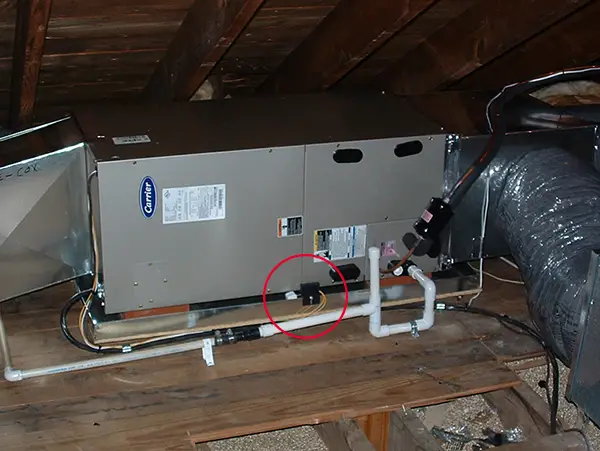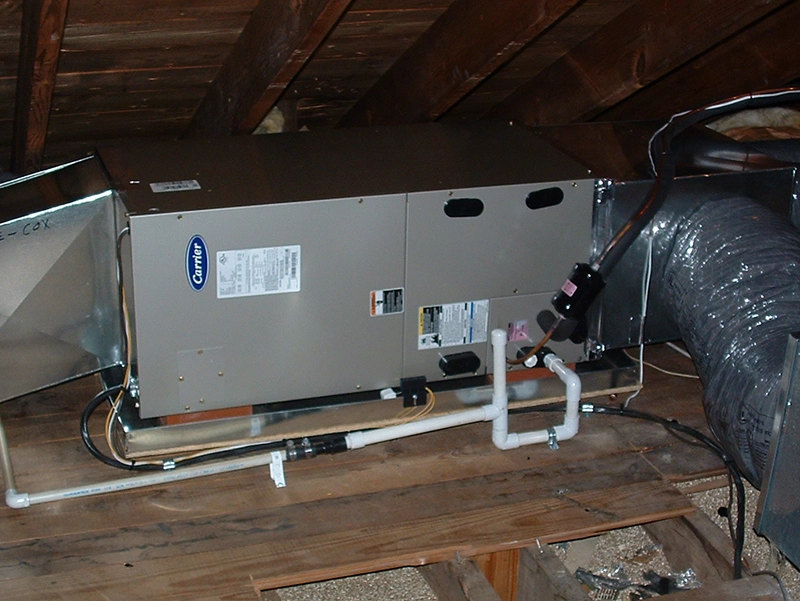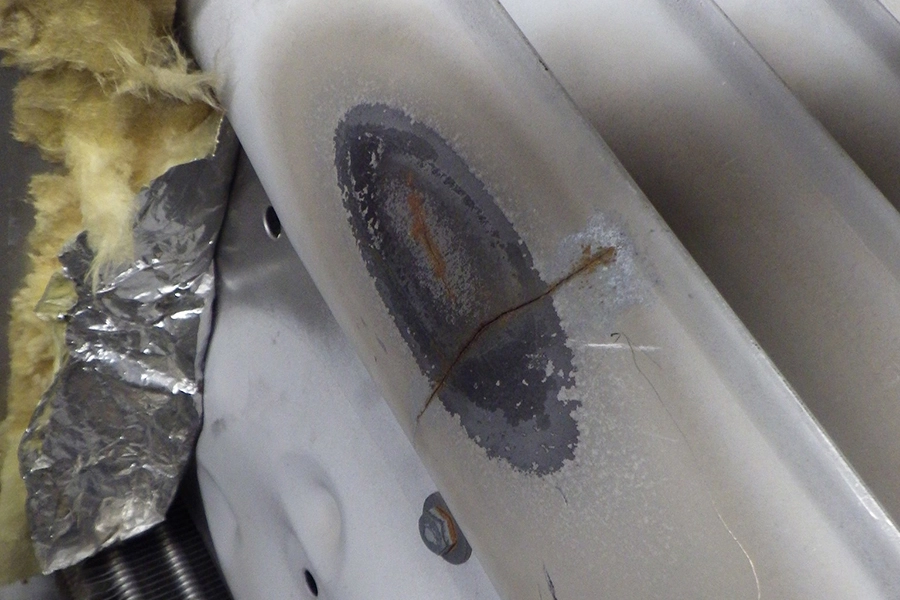Many air conditioning systems will have a float switch connected to the low voltage side of the system. A float switch is designed to keep your home AC unit from causing water damage to your home when the drain pan becomes full. Keep reading to discover more about float switches and their purpose.
What is an AC float switch?
A float switch is a safety mechanism that will break the electrical connection within the switch and turn your AC system off when it senses an unacceptable amount of water in the condensation pan. Under normal circumstances, you will never know that your float switch is there. However, if water is building up in the drain pan (from a clogged drain line for example), it will trip the switch, turn off the AC unit, and prevent the water from spilling over.
There is another option that some companies will opt for in place of a float switch. It is called a wet switch or a moisture switch. A wet switch will need to be kept completely dry. Once it senses that water has come into contact with it, it will trip the switch and shut your unit off.
The big difference is that the float switch will have to have enough water present to raise a float mechanism that trips the switch. While a wet switch merely has to have moisture come into contact with it before it will trip and shut the unit down.

Where is an AC float switch located?
There are different styles of float switches, and these styles will determine where they are located.
If you have the more traditional float switch, its purpose will be to shut the unit off if the water in the auxiliary pan below the unit has begun to fill with water. It will clip on the side of the pan, and the float connected to the switch will be suspended inside the pan where the water can access it.

The other style will look similar to a standard PVC fitting. It will often look like a T fitting with two wires coming out of it. This type will either screw directly into the drain hole threads of your unit or will be glued in place shortly after the drainpipe leaves the unit. The portion of the switch that has the two wires coming from it will almost always need to be faced directly upward.

Do I need an AC float switch?
For somewhere around $20, a float switch is a very worthwhile investment. If your unit is in your attic space, you must install one to prevent any water from leaking out of the unit or pan and damaging your ceiling drywall. If your unit is located within the home’s living space, you’ll want one to prevent any water from leaking out of your furnace and causing flooring, subflooring, or structural damage.
Suppose your unit is located in the crawl space or an unfinished basement, then it is ultimately yours or your installer’s decision. It is very common not to install them in conditions where water cannot damage anything, such as an unsealed crawl space. If the drain becomes clogged and water leaks out of the unit, it is not as much of a concern and can be corrected the next time your unit is serviced or repaired. However, if you’re crawlspace has a vapor barrier installed, you should still consider a float switch.
Related: Why Is My Furnace Leaking Water?
How do you reset a float switch?
Float switches will reset themselves once the water is no longer affecting the float. Once the water goes down, the float can go down as well, and it will reconnect the circuit and allow your unit to come back on. If the float switch isn’t resetting, check it for debris or obstructions that might not allow it to reset correctly.
If you have a wet switch, it will most commonly have a reset button on the switch that will have to be pressed before your unit comes back on. Also, a wet switch will have to be almost completely dry before it is able to be reset. So, if there is still water in the pan that is touching the wet switch, you will not be able to turn your unit on until the switch has completely dried out.
How do I know if it’s tripped?
This will depend on how the float switch has been installed. There are a couple of common ways that float switches will turn your unit off.
- The first will be when the float switch is connected to the 24V connection that turns your outdoor air conditioner on. This will mean that the rest of the unit will function as expected, your thermostat will stay on, and your fan will stay on. However, since the air conditioner is not running, warm air will be blowing into your home. As your home begins to warm up, you will quickly realize there is something wrong.
- The other way is when the float switch is connected to the primary 24V connection, which controls everything. This means that the indoor and outdoor units and the thermostat will shut off. If the thermostat has a battery backup, it may not shut off in this situation. Again, as your home begins to warm up, you may notice that none of your equipment is operating, and you will be able to tell that the float switch has tripped.
Why does it keep tripping?
The float switch should only trip when there is an excess of water. This means that the condensate drain is not draining correctly. The most common reasons will be slime build-up or something blocking the end of the pipe. If your drain is flowing water out of your unit correctly, it should not activate the float switch. You could try something like the product below to help clean the condensation pan and drain line.

Can I replace one myself?
Yes, you can replace one yourself. Float switches are readily available online or at some local retailers. They will typically cost around twenty dollars and should come with two new wire nuts and instructions for you to use. Click on the image above to purchase a popular model from Amazon.
How to replace a float switch
- Turn the power to the unit off
- Take the cover off of the unit
- Disconnect old switch wires
- Remove the old switch
- Reinstall the new switch
- Connect new switch wires to the same wires previously used
- Reinstall cover
- Turn power to the unit back on
Final thoughts
Float switches are always recommended if the unit is above your ceiling or located in a living space; if it is in a crawl space, it might be considered optional. If your home AC equipment is not working correctly, the float switch is an excellent place to check for possible causes before paying for a professional. And if the switch has gone out, they are affordable and relatively easy to replace by the average homeowner.




